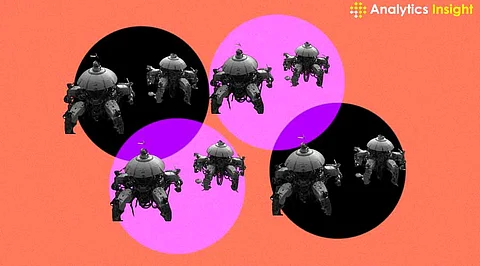

Swarm robotics refers to a fascinating field that rapidly develops and reaps the benefits of swarm intelligence in coordinating large groups of robots. The inspiration takes root in collective nature.
With swarm robotics in the pursuit of developing systems similar in their collaborative behaviors. This article discusses the importance of energy efficiency, the economic impacts of swarm robotics, and the ethical issues that need to be resolved as this technology is developed.
A significant factor in making swarm robotics a successful venture is energy efficiency. With an increase in the number of robots in a swarm, the power consumption indeed gets phenomenal.
Hence, power management systems must be developed to ensure that such robots operate for long periods. This will prevent the need for constant recharging or maintenance.
Some strategies that can be used to enhance energy efficiency in swarm robotics are:
1. Protocol optimization for communication: Communication between robots cuts down the amount of energy expended in the transmission of data. Optimizing the protocol employed in communication would minimize the energy that could be consumed by the robots in their interaction.
2. Adaptive Task Allocation: Adaptive algorithms dynamically allocate tasks to the robots based on their levels of energy. For example, in areas where robots have more energy reserves. They will undertake the challenging activities while less energetic robots will undertake the lesser energy-using activities.
3. Usage of Renewable Energy Sources: The usage of renewable energy sources, such as solar panels or kinetic energy, will significantly reduce reliance on the traditional battery supply. This would enhance the autonomy of the swarm robots while promoting sustainability.
High development costs remain one of the significant barriers to wide-scale usage. This requires heavy investment in sophisticated sensors, communication systems, as well as robust software frameworks. Thus going quite out of the means of most prospective users, especially SMEs. The way out of this is finding solutions that are more affordable for mass usage.
1. Standard Components: With standardization of the components involved in a swarm robotics scenario, the cost of manufacture can go down. This can make assembly simpler.
When developers could depend on standard parts, designing became easier and innovativeness was promoted.
2. Open Source Platforms: Open source platforms for swarm robotics would enable collaborative output among many researchers, and educators working in this arena. Sharing the codes or resources can cut costs by the collective sense of the community and accelerate advancements.
3. Training Curriculum: Nurturing a curriculum for swarming robotics can result in awareness and a greater understanding of the field. Especially in the future engineers and researchers. An institution that incorporates swarm robotics into a curriculum that promotes interest and helps develop skills about this innovation.
Swarm robotics deployment is accompanied by ethical and social issues, which should be considered properly. Major issues are:
1. Privacy: The moment swarm robots start appearing more in the public as well as private domains, questions regarding matters of privacy. It is very much necessary that measures of protection are developed so that personal information is not intruded by swarm robots, thereby not violating people's privacy.
2. Security: Hacking and misuse capabilities of swarm robots open up vulnerabilities from security aspects. Important security measures need to be built in the system for protection of these systems against anti-social elements.
3. Replacing human labor: The integration of swarm robots into different sectors may displace human workers. It is difficult to approach this challenge but can be through planning workforce transition.This may be in the form of retraining packages aimed at preparing the workers for the new roles in a highly roboticized environment.
Swarm robotics heralds a revolution in robotics and artificial intelligence. These systems possess unique abilities for scaling, flexibility, and robustness by learning principles of swarm intelligence.
It stands poised, with further research and development, to revolutionize several industries from agriculture to healthcare. As well as address many of the world's most significant challenges.
However, jumping over the technical, economic, and ethical hurdles would then prove to be the challenge.
Researchers, policymakers, and industry leaders need to work together to build a responsible framework for swarm robotics. This will ensure its development and deployment benefit society as a whole.
